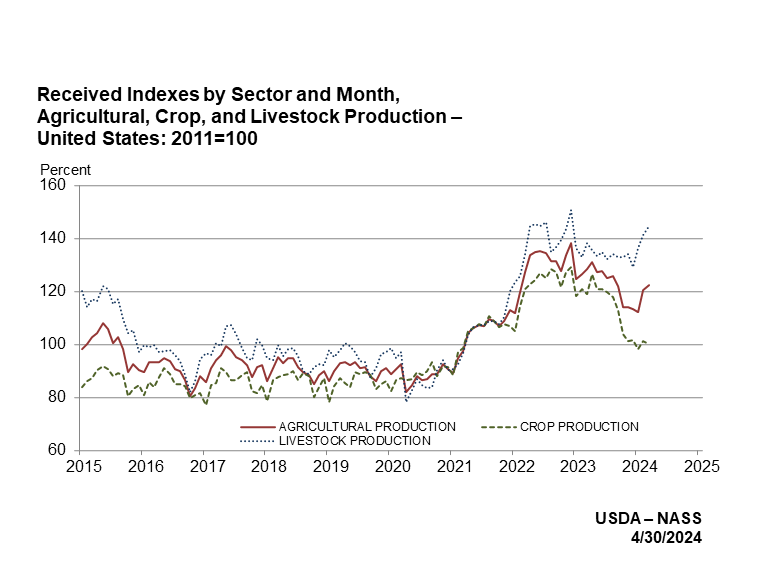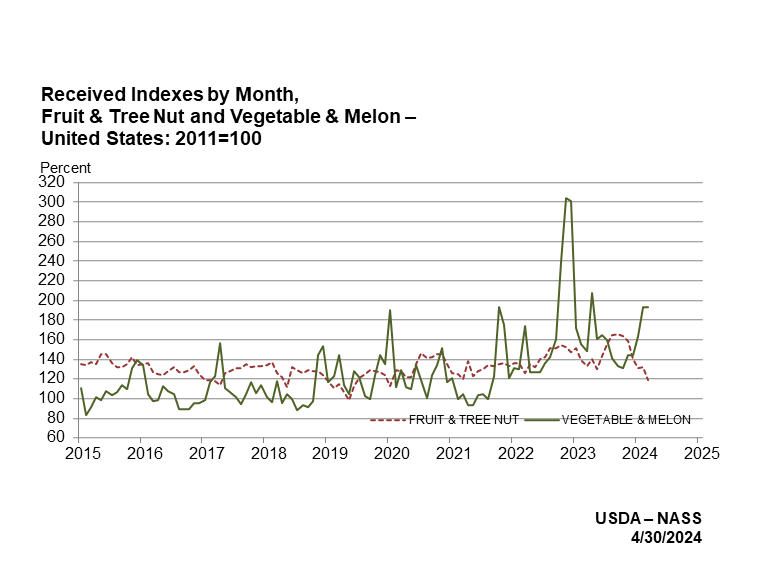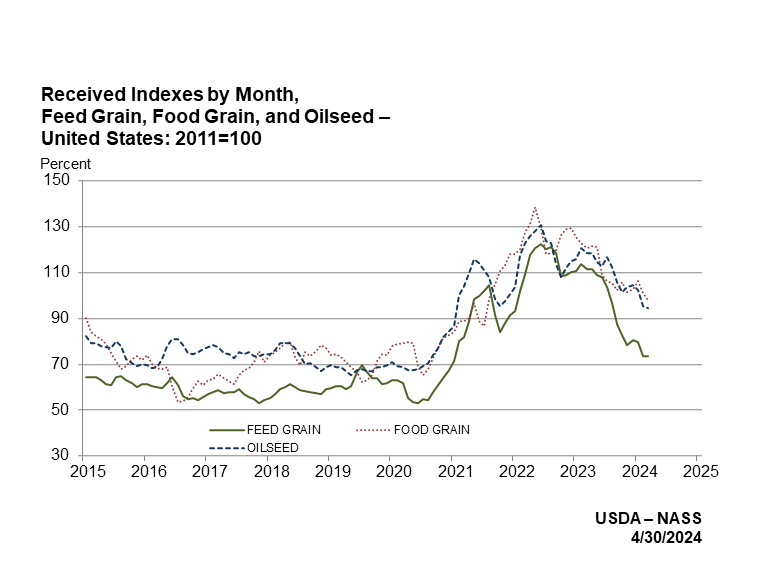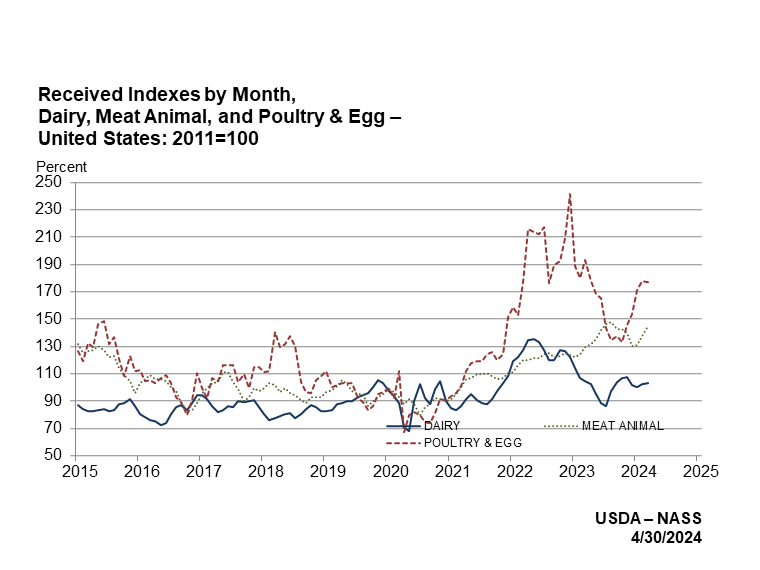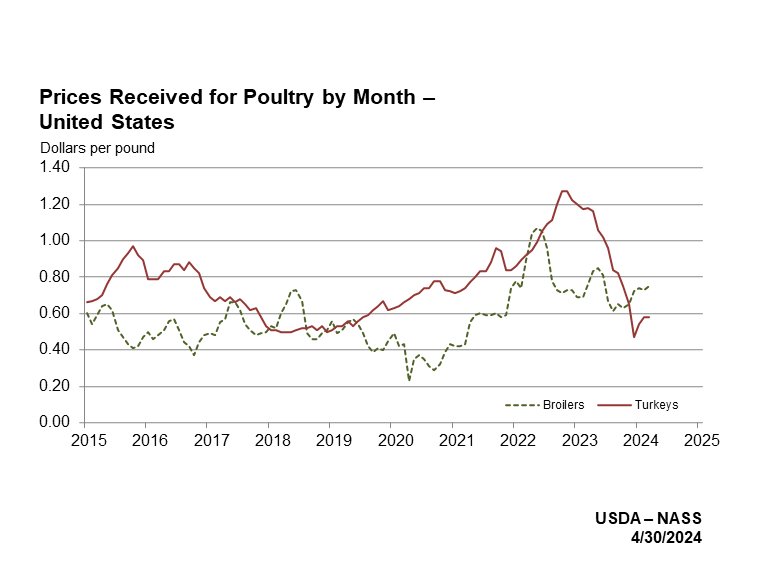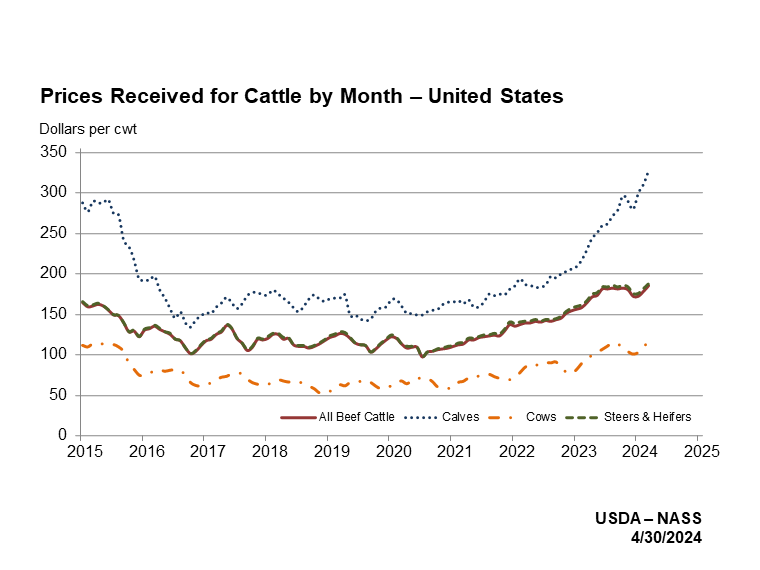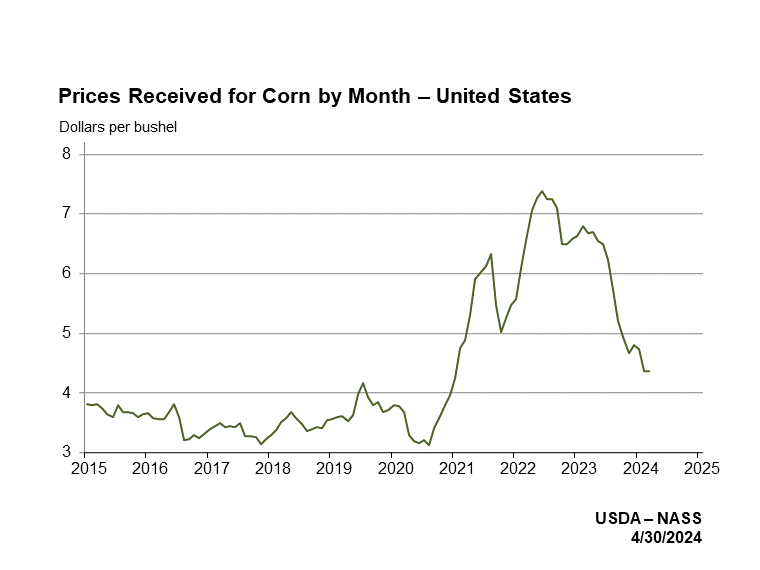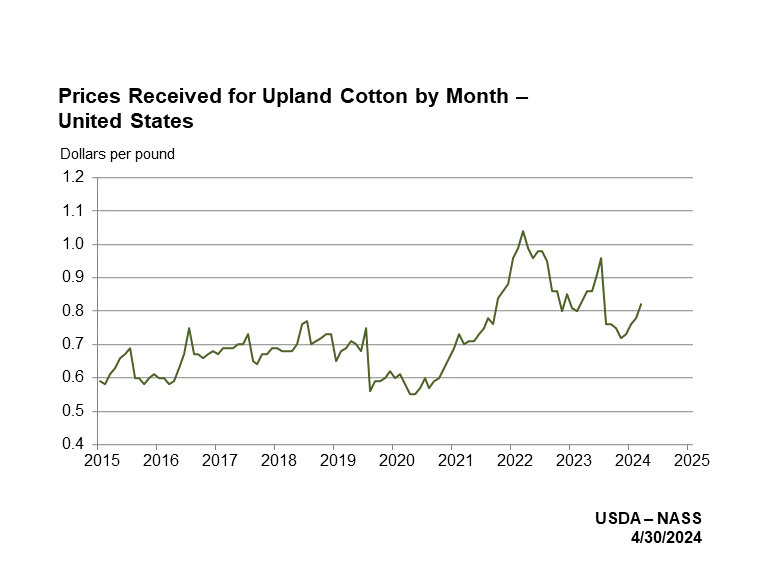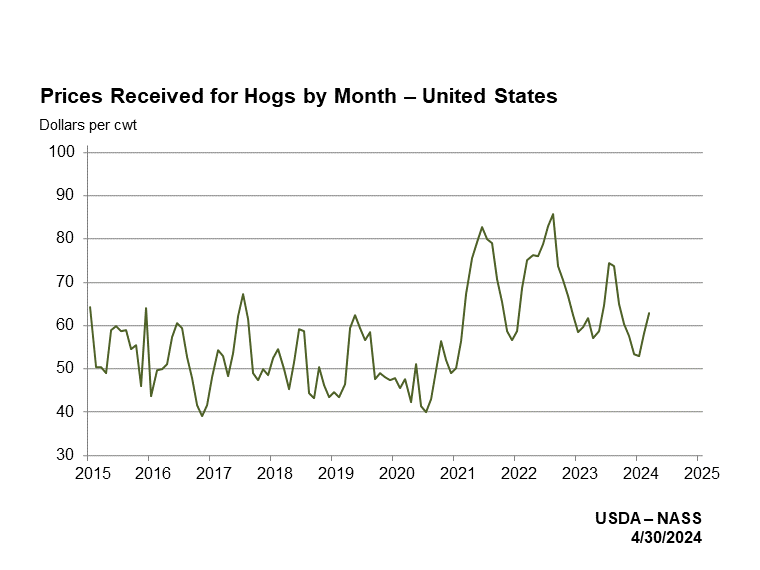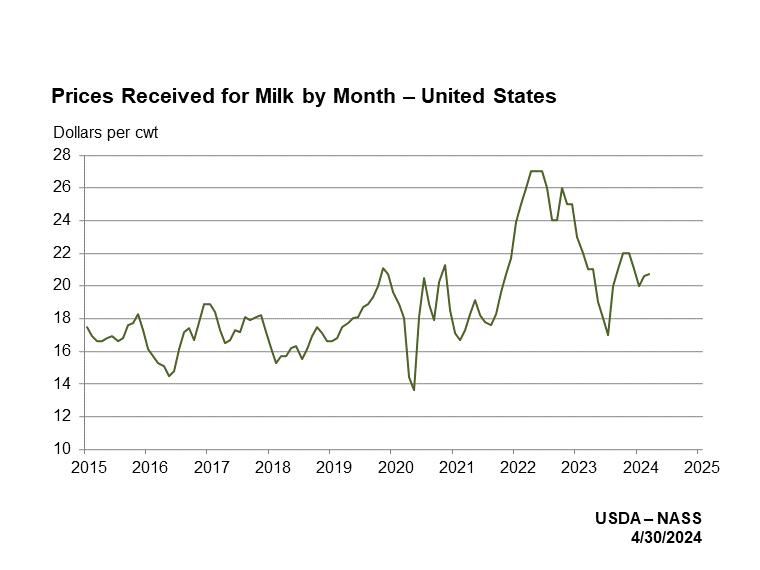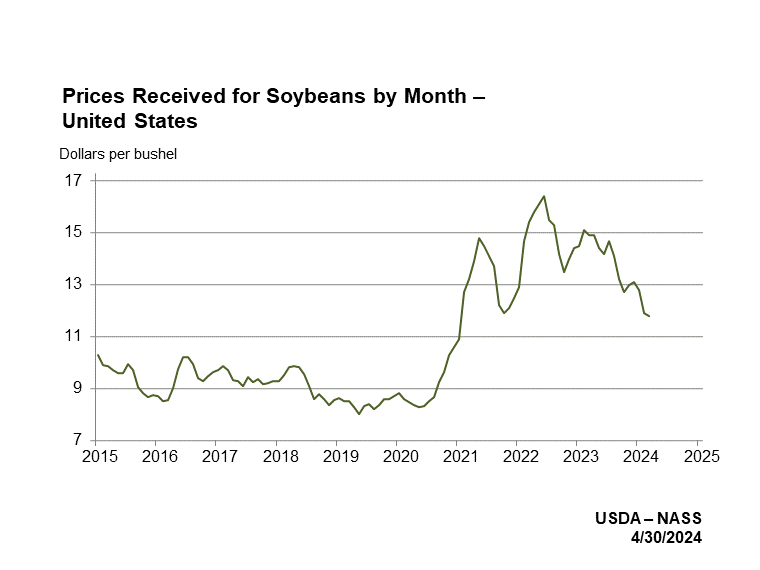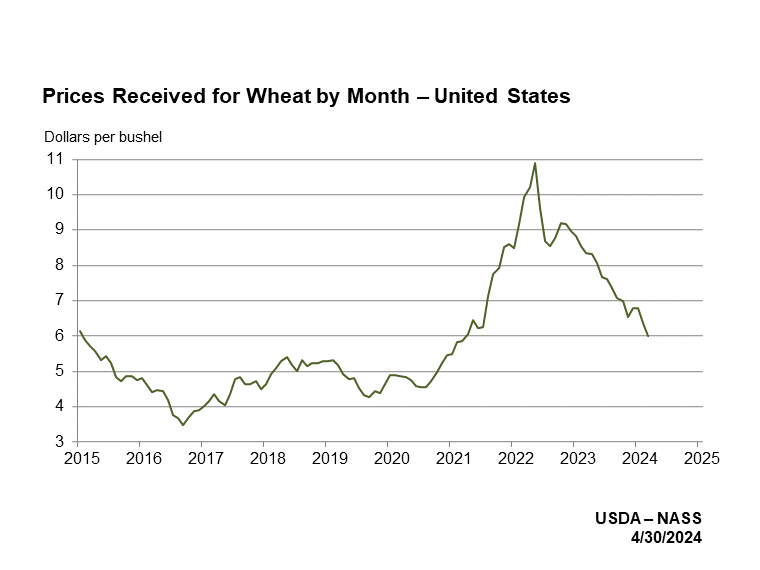- Data & Statistics
Access Quick Stats (searchable database)
The Quick Stats Database is the most comprehensive tool for accessing agricultural data published by NASS. It allows you to customize your query by commodity, location, or time period.
Access Quick Stats Lite
Quick Stats Lite provides a more structured approach to get commonly requested statistics from our online database.
Explore Statistics
County Level Information
Geospatial Data & Interactive Maps
- Publications
Browse NASS Reports
- by Subject
- by Date (Reports Calendar)
- by Title/Release Day
- by Keyword
- Guide to Products and Services
Additional Reports
Historical Publications
- Archived Ag Census Reports (2002 and prior - published every 5 years)
- Annual Agricultural Statistics
- Statistical Bulletins (final estimates, 1987 to 2012
- Track Records: (crops, livestock, grain stocks)
- Trends 20th century
- Price Reactions (after crop or livestock reports)
Receive Reports by Email:
- Newsroom
News Releases
04/15/24 USDA NASS announces retirement of Administrator Hubert Hamer
03/28/24 United States hog inventory up 1%
03/28/24 US farmers expect to plant less corn and more soybean acres
03/26/24 USDA to host Data Users’ Meeting to gather public input on statistical programs
Read More News
ASB Notices
04/15/24 NASS appoints Lance Honig as new ASB Chair
04/09/24 NASS discontinues select 2024 data collection programs and reports
04/04/24 NASS announces program changes following five-year review
02/23/24 NASS Delays Cold Storage Data Release
12/19/23 NASS seeks public input during survey program review
Read More Notices
Videos
02/13/24 2022 Census of Agriculture Data Highlights
02/13/24 How to Find 2022 Census of Agriculture Data
02/13/24 2022 Census of Agriculture Data Release Event
07/16/21 What is a Farm?
08/05/20 The NASS Mission: We do it for you
View More Videos
ASB Briefings
04/17/24 National Hemp Report (April 2024)
04/11/24 Crop Production (April 2024)
03/28/24 Quarterly Hogs and Pigs (March 2024)
03/28/24 Grain Stocks, Prospective Plantings, Rice Stocks (March 2024)
03/08/24 Crop Production (March 2024)
View More Briefings
- Surveys
- Census
- About NASS
Structure and Organization
- Agency Overview
- NASS Biographies
- Organizational Chart
- Assistance to Other Organizations
- International Programs
- NASS Strategic Plan for FY 2022-2026
- USDA Strategic Goals
- NASS Climate Adaptation and Resilience Plan
Guiding Principles
- Mission and Core Values
- Keeping Data Safe
- Confidentiality Pledge
- Security Pledge
- Security Statement
- Statement of Commitment to Scientific Integrity
- Regulations Guiding NASS
- Information Quality
Civil Rights
- USDA and NASS Civil Rights Policy Statement
- Civil Rights Accountability Policy and Procedures
- No FEAR Act Notice
- No FEAR Act - NASS Data
-
REE Reasonable Accommodations and Personal Assistance Services
- NASS Disability Affirmative Action Plan
- How to File an EEO Complaint
- Contact information for NASS Civil Rights Office
Work at NASS
Education and Outreach
- Understanding Ag Statistics
- Data Users' Meetings
- Morris Hansen Lecture
- International Conference on Agricultural Statistics
History and Procedures
- Agricultural Statistics Board and Lockup
- Agricultural Statistics: A Historical Timeline
- The Story of U.S. Agricultural Estimates
- As We Recall: The Growth of Agricultural Estimates, 1933-1961
-
Safeguarding America's Agricultural Statistics Report and Video
- History of Ag Statistics
- Report Procedures
- An Evolving Statistical Service
- Fact Finders for Agriculture
- Hall of Fame
- Contact Us
Mailing Address:
USDA-NASS
1400 Independence Ave., SW
Washington, DC 20250Survey FAQs and Contact Us:
Access FAQs or submit a question.
Data Inquiries:
Hours: 7:30 a.m. - 4:00 p.m. Eastern Time
Monday - Friday, except federal holidays
Toll-Free: (800) 727-9540Media Inquiries:
Other USDA Inquiries:
Hours: 9:00 a.m. - 5:30 p.m. Eastern Time
Monday - Friday, except federal holidays
Toll-Free: (833) One-USDA
Email: askusda@usda.gov
Website: https://ask.usda.gov/s/Civil Rights Office:
June Turner, Director
Email: / Phone: (202) 720-8257Regional and State Field Offices:
Find contact information for Regional and State Field Offices
Ask a Specialist:
Have a specific question for one of our subject experts? Contact a specialist.
Web Content Publishing Schedule:
Section 207(f)(2) of the E-Government Act of 2002 requires federal agencies to develop an inventory of information to be published on their Web sites, establish a schedule for publishing information, make those schedules available for public comment, and post the schedules and priorities on the Web site.
- Help
Technical Issues
Surveys
Prices Received Surveys and Indexes

NASS conducts various monthly and annual surveys and collects additional information to estimate the prices producers receive for approximately 100 crop and livestock commodities. Surveys are conducted in every state, although not all states survey all crop and livestock commodities; the specific commodities covered are customized for each state.
For the major grains, oilseeds, and pulse crops, NASS surveys a select panel of approximately 2,000 mills, elevators, and buyers monthly in the top producing states, asking about total quantity purchased and total dollars received. For the major livestock species, the Agricultural Marketing Service (AMS) collects prices daily, weekly, and monthly from packing plants and livestock auctions on number of head sold, total live weight, and total dollars paid. For other commodities, NASS conducts surveys and uses administrative data as needed.
NASS uses the monthly price estimates for 48 commodities to calculate prices received indexes for overall farm prices, all crops, all livestock, and twelve crop and livestock commodity groupings. The indexes measure the change in the prices agricultural producers receive compared to a base period (1990-1992=100). NASS also converts the indexes to the parity base period (1910-1914=100), as required by statute to compute parity prices and parity ratios.
Respond Online
Click here to complete your survey online. Remember, you will need your unique survey code to sign in.
Get the data from the results of this survey.
Based on the data collected and the information received from AMS, NASS computes monthly average state and national prices that producers received including market year averages (MYA) for approximately 65 commodities. An additional 35 commodities are MYA only. NASS publishes the price estimates in the Agricultural Prices report on or near the last business day of each month. Data are also available through the NASS searchable database, QuickStats.
All indexes are updated monthly in QuickStats and published quarterly (January, April, July, October) in Agricultural Prices.
Access the data in Quick Stats database:
View and download data from the NASS Quick Stats database.
- Choose the detailed database (Quick Stats 2.0).
- In Quick Stats 2.0, under Program, select "Survey."
- Make additional category choices for the data you are looking for.
- Click to read about the Quick Stats Tools
Want to receive reports automatically? Click an option below to subscribe.
Charts and Maps:
How the Price Estimates and Indexes Are Used
Prices received data are inputs for a number of important functions performed by data users:
- USDA uses Prices Received data to determine the value of agricultural production.
- The Economic Research Service (ERS) and the Bureau of Economic Analysis (BEA) use commodity cash receipts and net farm income as components for the National Income and Product Accounts (NIPA).
- The Risk Management Agency (RMA) uses state level price data to administer insurance programs.
- The Farm Service Agency (FSA) uses prices received estimates in computing counter cyclical and disaster payments.
- Forest Service (FS) and Bureau of Land Management (BLM) use the private grazing fees, the November-October average beef cattle price, and the Beef Cattle Production Index (1964-1968=100) to determine the Federal grazing fee lease rate under the Public Rangeland Improvement Act.
- State governments use the data for land valuations and taxation purposes.
- The AMS uses parity price data to administer fruit and vegetable marketing orders.
- The Federal Reserve System and ERS use the prices received indexes as a general measure of commodity price changes.
Additional Information
For information about the prices received survey and index methodology, please click here.
For information on NASS surveys and reports, call the NASS Agricultural Statistics Hotline at (800) 727‑9540, 7:30 a.m. to 4:00 p.m. ET, or e-mail: nass@usda.gov.
Last Modified: 04/18/2024


